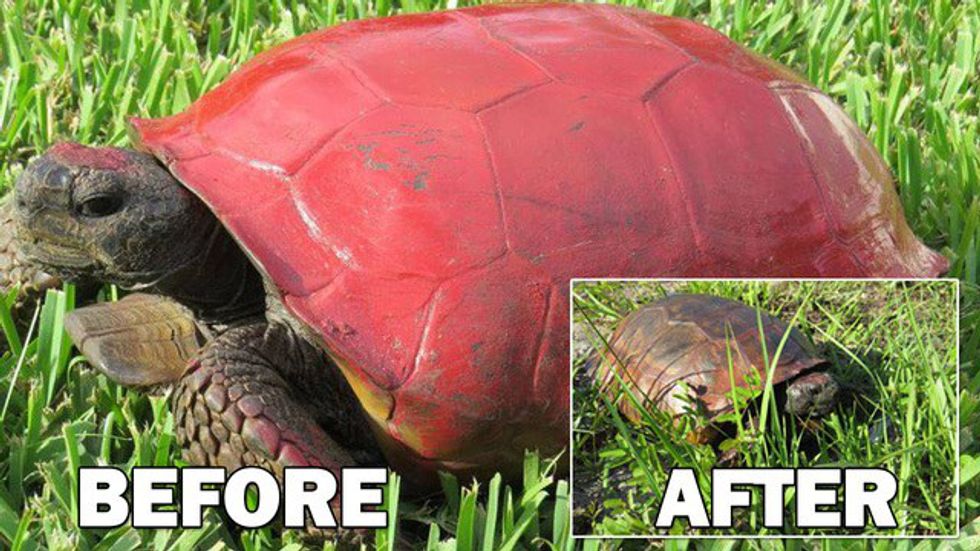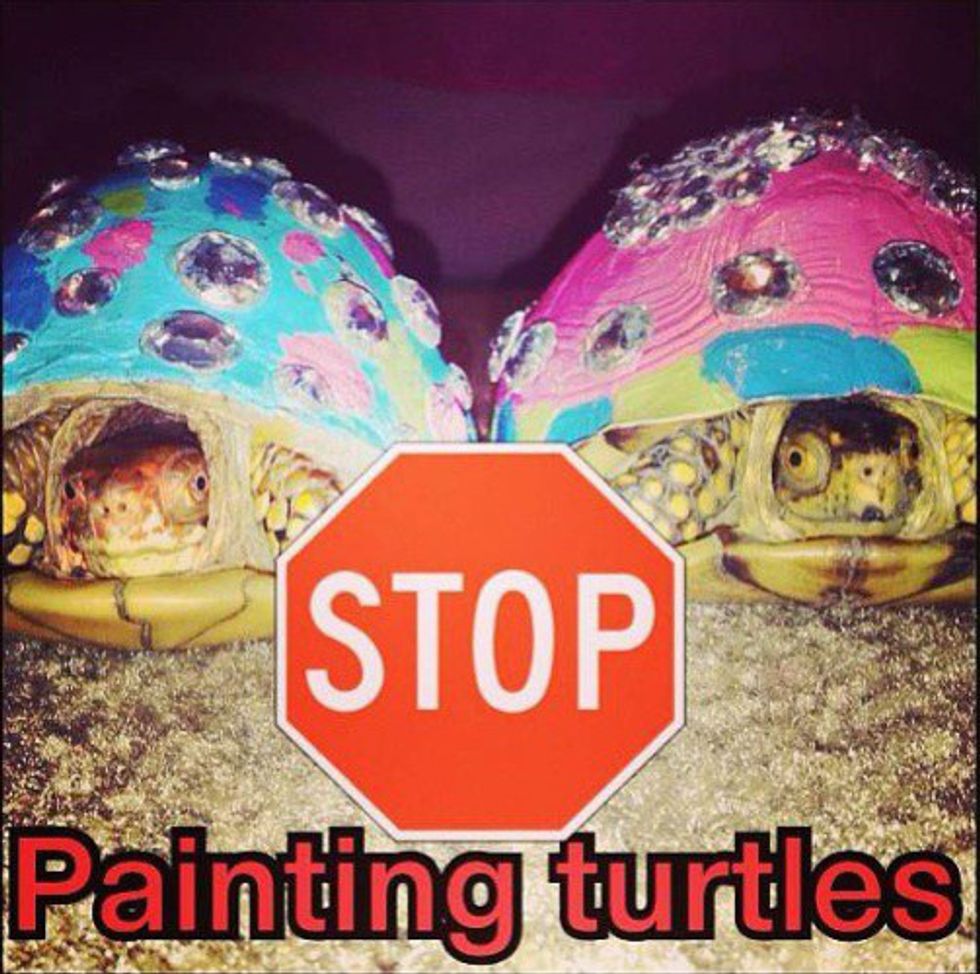Humans strike, yet again.
This time the Florida gopher tortoises and turtles are victim to the latest heinous crime. In recent months, the Florida Fish and Wildlife Conservation Commission (FWC) have received reports of the reptiles being painted. Just in the last week, two painted turtles were reported to FWC. Florida wildlife officials want to remind the public it is not only illegal to harass tortoises and turtles, but it is dangerous.
Deborah Burr, FWC’s Gopher Tortoise Program Coordinator, told WFSU news, “You know, people think painting them is cute, but it’s really harmful to the animal.”
The toxic paint fumes result in immediate harm to the animal’s respiratory system and as the paint is absorbed into the shell, the toxins seep into their bloodstream. Furthermore, with bright vibrant shells, tortoises are more vulnerable to predation because they are easily noticed by predators. Most gopher tortoises typically have dark colored shells that act as a camouflage and are ultimately used as vital protection in the wild.
These long-lived reptiles occupy the Florida forests, pastures, and even yards. For shelter, they dig deep burrows and forage on low growing plants. The Gopher tortoise is often referred to as a keystone species because 350 other species share these burrows with them.
UV rays from the sun are crucial to the nutrition of gopher tortoises and freshwater turtles. In order to grow and stay healthy, the UV rays have to be absorbed through their shells, but layers of paint and/or nail polish prevent the absorption. A Florida local even noted the importance of UV rays for turtles when he had a sick turtle. He kept the turtle alive as long as he could by allowing it to be under sunlight as often as possible.
After a tortoise’s shell is painted, it takes many tedious cleaning sessions to remove the paint. It is not uncommon for the tortoise to need sedation in order to effectively remove all the paint.
Unfortunately, this is not the first time Gopher tortoises have suffered at the hands of humans. There have been many occasions where a tortoise was tossed into the ocean because someone believed that was the animal’s “natural environment”. Sadly, tortoises cannot swim and often drown in those scenarios.
The conservation of this keystone species does not just depend on the FWC and conservation groups, but also Florida’s citizens. The gopher tortoise is listed as Threatened and is protected under state laws. Officials say if you see a painted tortoise, you can anonymously report it to the FWC regional office near you by calling the FWC Wildlife Alert Hotline at 888-404-3922 or texting tip@myfwc.com from your cell phone.
Floridians are blessed with many opportunities to experience wildlife. Although humans have had good intentions in some situations, FWC suggests it is best for people to admire the animals from afar, while simply enjoying their natural beauty. Burr added, “Just out of respect for wildlife, just let them be, observe them from a distance and enjoy their movements and their activities.”













































